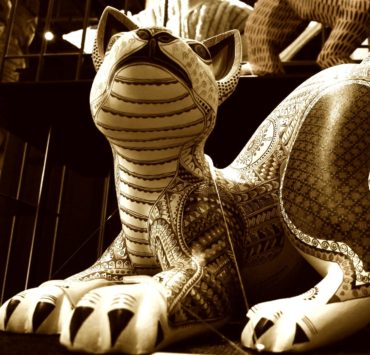
The First Purge is the Black Panther of Wu-Tang Clan land. In the Black-directed prequel, a drug lord-crowned-king mastered martial arts and superhero-like marksmanship to rescue residents to redeem his dope-dealing self during a 12-hour purge when the authoritarian state sanctioned and incentivized all crime, including murder. The white Architect(s) and the New Founding Fathers of America select the Staten Island projects as their experimental epicenter because they both banked on poor black folks killing each other. Neither postwar ghettos nor government-backed mercenaries, blackface masked murderers, or hooded klansmen could dead so-called undesirables. During the first purge, black folks partied, prayed, and celebrated our resourcefulness, resilience, and resistance.
It was that black.
It was Kendrick Lamar we gon’ be alright black.
The dystopian action-packed political horror film is genre shifting. Fear moves from the home and head of the lone white protagonist to the heart of a minoritized community. There is no Ethan Hawke safeguarding his suburban house against an unknown, black threat. There is no grief-stricken sergeant battling his inner demons while bartering with inner-city gangs. The classic horror trope about white body and space invasion is all but abandoned in the prequel. Instead, we fear losing Isaiahs to Dimitri’s streets because of toxic masculinity and intergenerational poverty, and we fear losing enduring women like Nya who are the “wokest” final girls to lead the resistance against sewer-dwelling pussy grabbers. In addition to adopting a radical racial lens, moviegoers had to consider how white fear—fear of shifting demography, fear of losing political power, fear of poor racial others—prompted the first purge. It is no stretch to connect the new fictional policy to the present-day when poor migrant families are detained indefinitely, or to history when the US government okayed Indigenous mass killings, Japanese American internment, and the forced sterilization and mass incarceration of black and brown citizens. In First Purge, moviegoers experienced the collective fear of minoritized communities living with (and through) a nation’s effort to make America white again.
Early lackluster reception of the film from mainstream critics and popular movie review sites suggest its “preachy” tone was a turnoff. To be clear, the entire Purge franchise mines the politics of its time. This time, however, graphic scenes of racial unrest and gender violence were as explicit as the class war waged in earlier installments. We had to sit with the carnage of white nationalism in the darkness. At daybreak when the sirens called an end to the purge on screen, I followed the theater lights off screen believing that the bewilderment that I saw (and later read) meant that we shared the same space but had an entirely different experience. We are a movie and country divided. To truly appreciate Get Out’s grimy cousin, I suspect we might need to outlive this Trumpian fear-mongering moment. The near-future horror film feels unfamiliar for some and pressingly close for others. And that fact, by far, should scare all of us.
Still from trailer, The First Purge. Universal Pictures

Aisha Durham is a cultural studies scholar. Durham uses auto/ethnography, performance writing, and intersectional approaches honed in Black feminist cultural criticism to analyze representations of Black womanhood in hip hop media. Recent work on Black womanhood is featured in her new book, Home with Hip Hop Feminism: Performances in Communication and Culture. This book extends earlier discussions about hip hop culture, media representations, and the body in her co-edited volumes, Home Girls Make Some!: Hip Hop Feminism Anthology and Globalizing Cultural Studies: Ethnographic Interventions in Theory, Method & Policy. Durham’s cultural criticism has been featured in popular news media and sites, such as The New Yorker, Haaretz, Crunk Feminist Collective, NewBlackMan, and Ms. Magazine.







